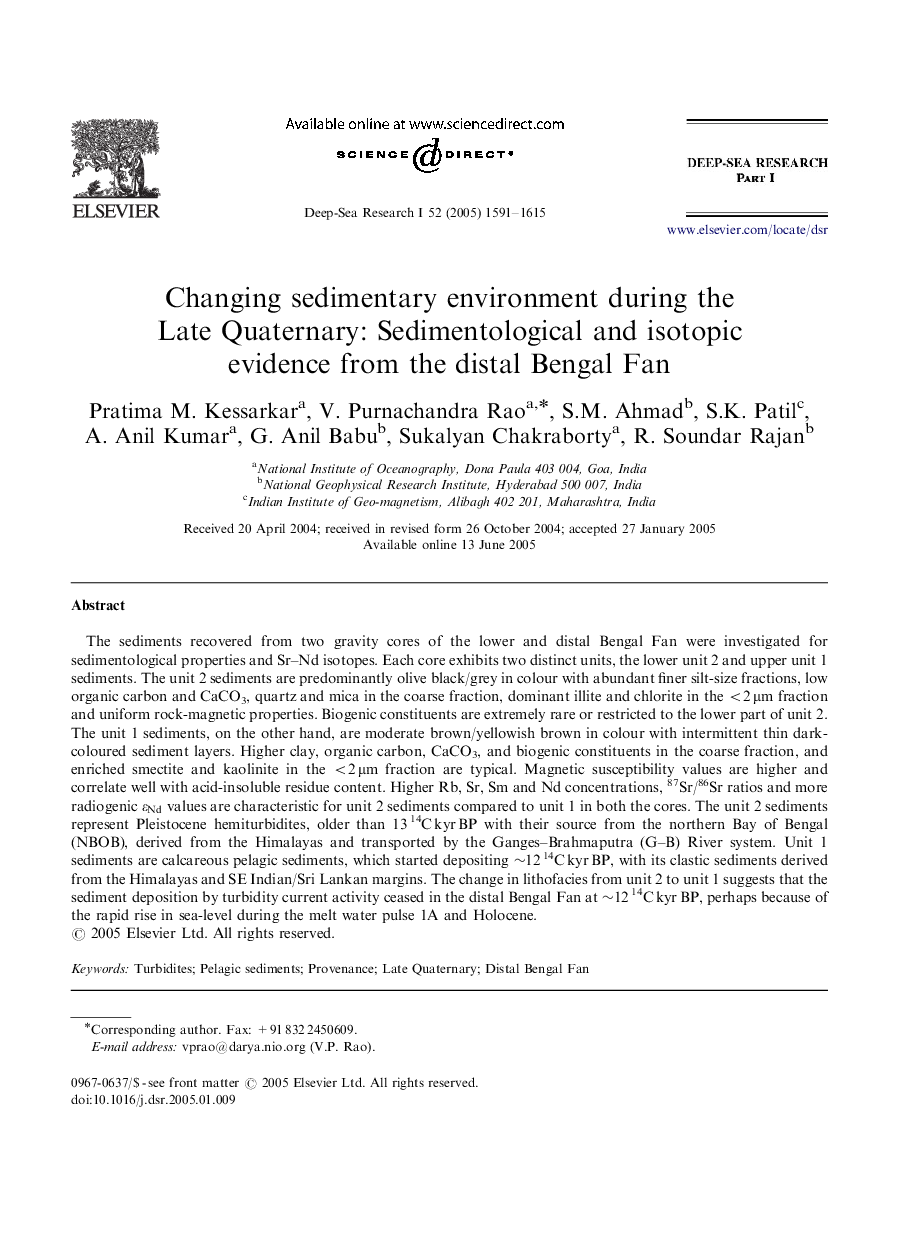| کد مقاله | کد نشریه | سال انتشار | مقاله انگلیسی | نسخه تمام متن |
|---|---|---|---|---|
| 9479764 | 1326157 | 2005 | 25 صفحه PDF | دانلود رایگان |
عنوان انگلیسی مقاله ISI
Changing sedimentary environment during the Late Quaternary: Sedimentological and isotopic evidence from the distal Bengal Fan
دانلود مقاله + سفارش ترجمه
دانلود مقاله ISI انگلیسی
رایگان برای ایرانیان
کلمات کلیدی
موضوعات مرتبط
مهندسی و علوم پایه
علوم زمین و سیارات
زمین شناسی
پیش نمایش صفحه اول مقاله

چکیده انگلیسی
The sediments recovered from two gravity cores of the lower and distal Bengal Fan were investigated for sedimentological properties and Sr-Nd isotopes. Each core exhibits two distinct units, the lower unit 2 and upper unit 1 sediments. The unit 2 sediments are predominantly olive black/grey in colour with abundant finer silt-size fractions, low organic carbon and CaCO3, quartz and mica in the coarse fraction, dominant illite and chlorite in the <2 μm fraction and uniform rock-magnetic properties. Biogenic constituents are extremely rare or restricted to the lower part of unit 2. The unit 1 sediments, on the other hand, are moderate brown/yellowish brown in colour with intermittent thin dark-coloured sediment layers. Higher clay, organic carbon, CaCO3, and biogenic constituents in the coarse fraction, and enriched smectite and kaolinite in the <2 μm fraction are typical. Magnetic susceptibility values are higher and correlate well with acid-insoluble residue content. Higher Rb, Sr, Sm and Nd concentrations, 87Sr/86Sr ratios and more radiogenic εNd values are characteristic for unit 2 sediments compared to unit 1 in both the cores. The unit 2 sediments represent Pleistocene hemiturbidites, older than 13 14C kyr BP with their source from the northern Bay of Bengal (NBOB), derived from the Himalayas and transported by the Ganges-Brahmaputra (G-B) River system. Unit 1 sediments are calcareous pelagic sediments, which started depositing â¼12 14C kyr BP, with its clastic sediments derived from the Himalayas and SE Indian/Sri Lankan margins. The change in lithofacies from unit 2 to unit 1 suggests that the sediment deposition by turbidity current activity ceased in the distal Bengal Fan at â¼12 14C kyr BP, perhaps because of the rapid rise in sea-level during the melt water pulse 1A and Holocene.
ناشر
Database: Elsevier - ScienceDirect (ساینس دایرکت)
Journal: Deep Sea Research Part I: Oceanographic Research Papers - Volume 52, Issue 9, September 2005, Pages 1591-1615
Journal: Deep Sea Research Part I: Oceanographic Research Papers - Volume 52, Issue 9, September 2005, Pages 1591-1615
نویسندگان
Pratima M. Kessarkar, V. Purnachandra Rao, S.M. Ahmad, S.K. Patil, A. Anil Kumar, G. Anil Babu, Sukalyan Chakraborty, R. Soundar Rajan,